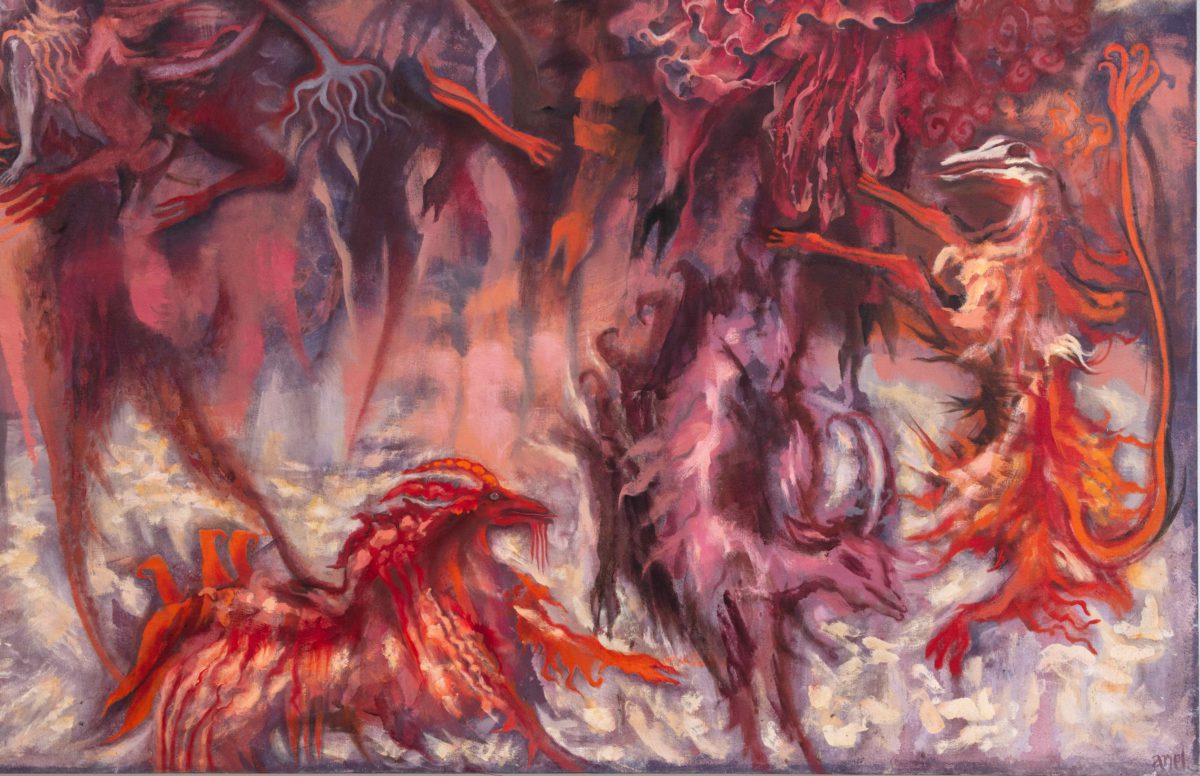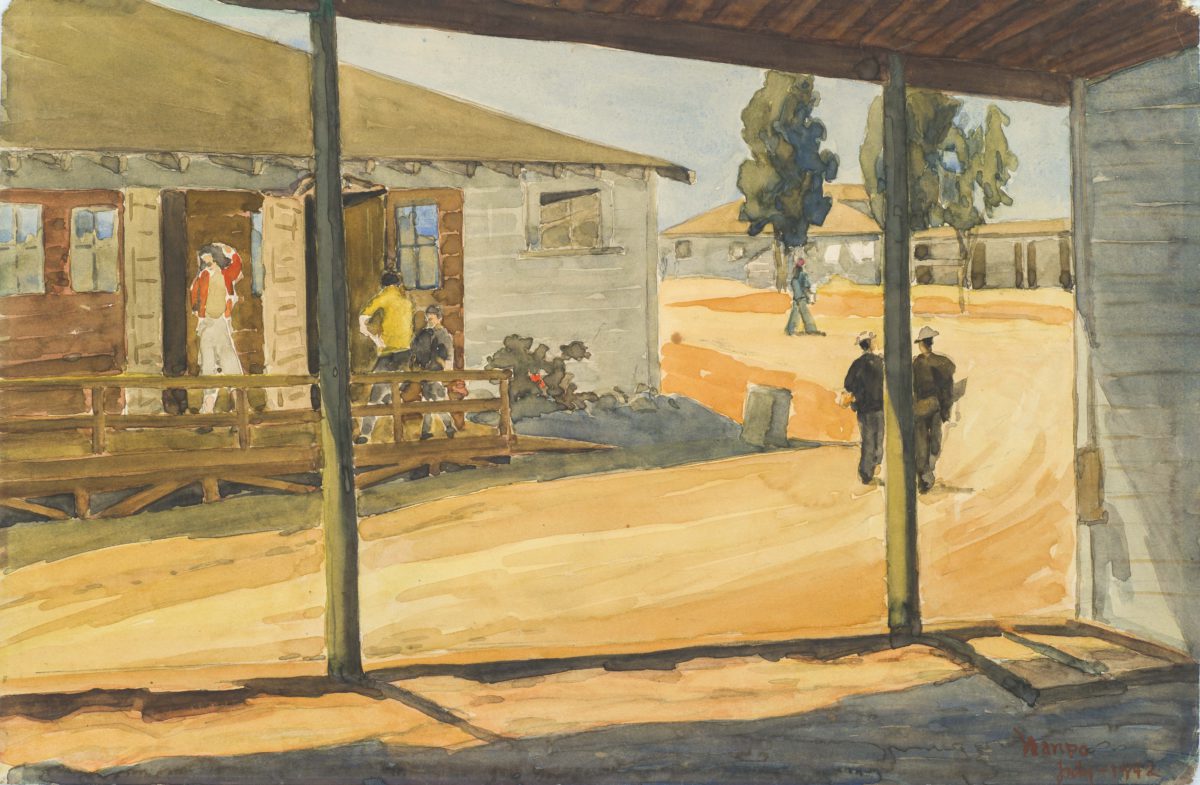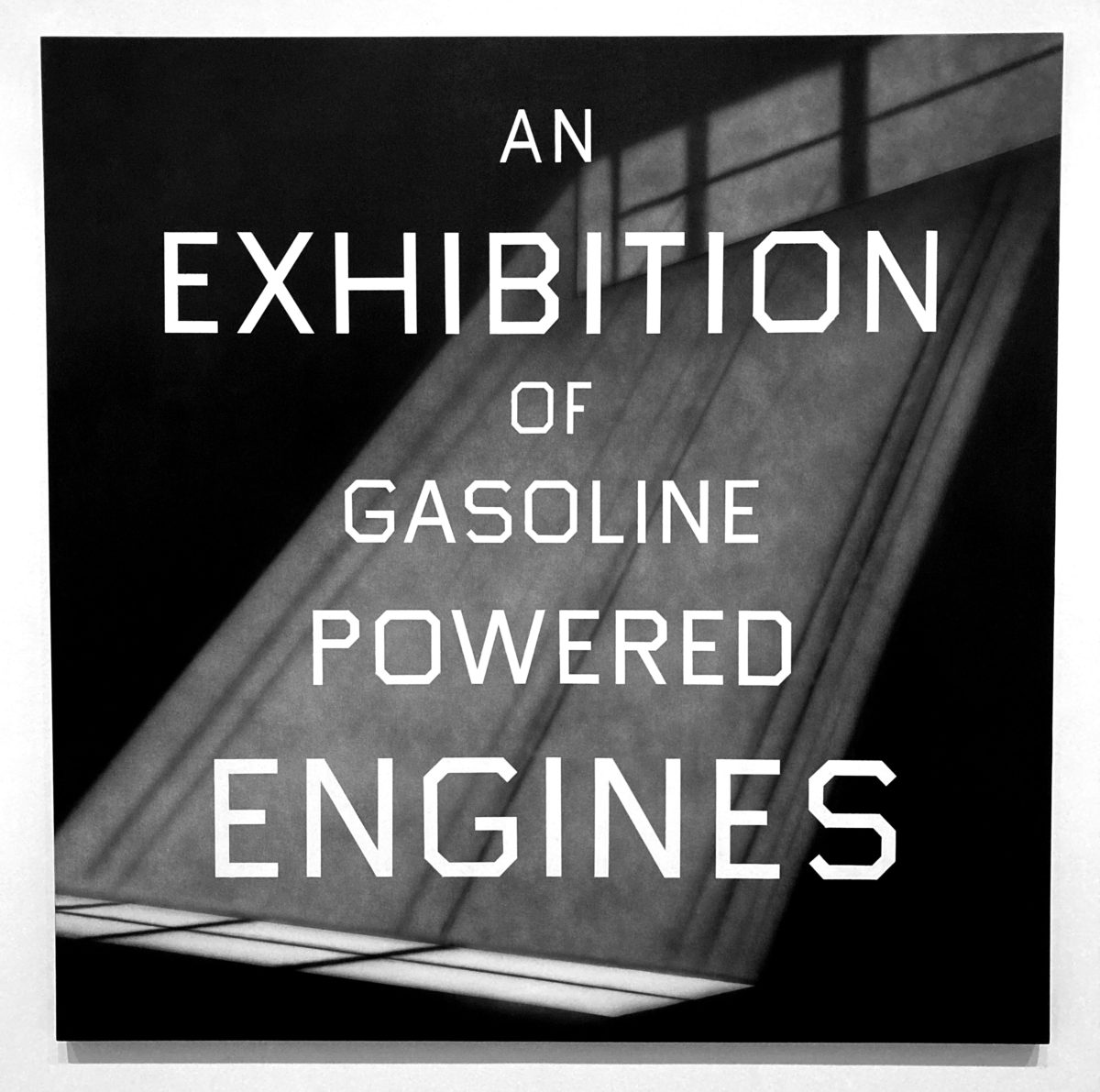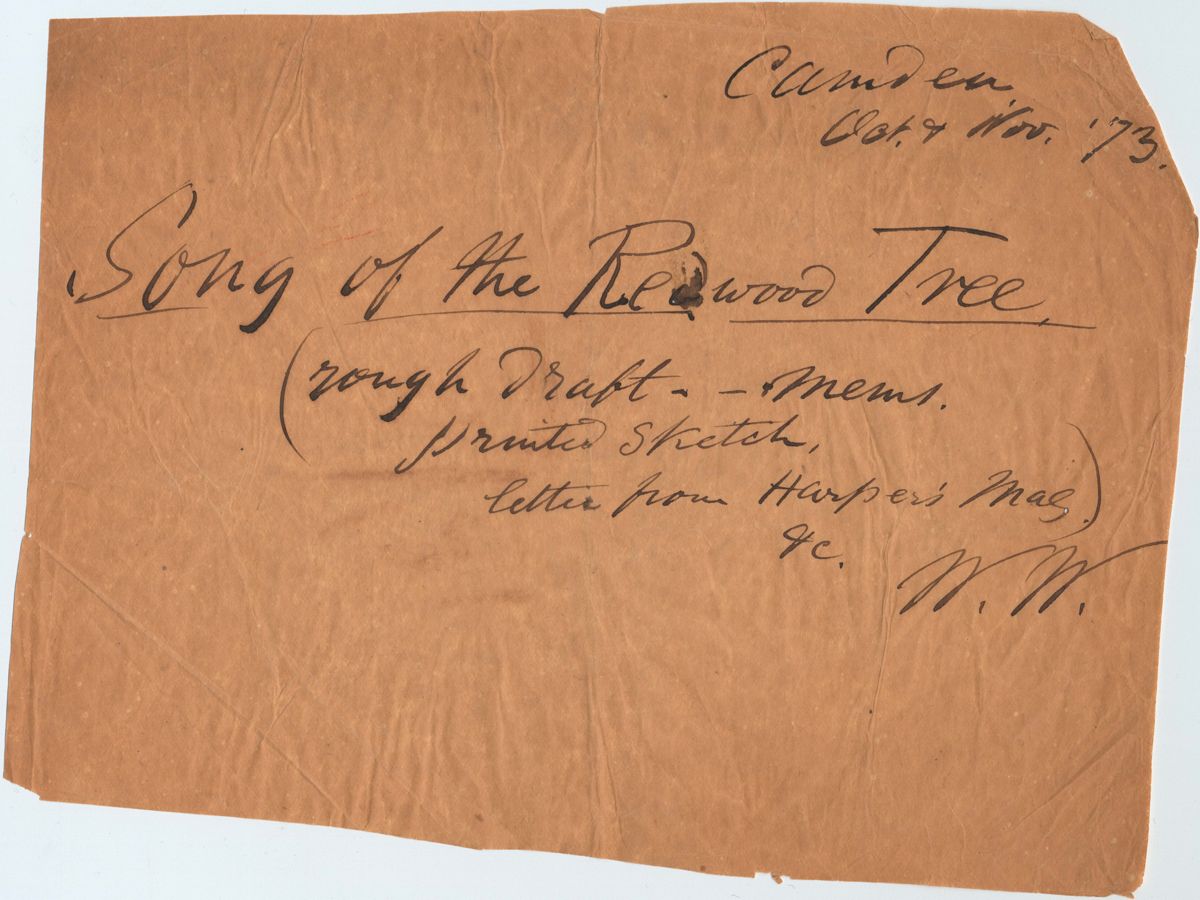
Born Annelise Elsa Frieda Fleischmann in Berlin, Germany, Anni Albers trained at the School of Applied Arts and the pioneering Bauhaus before teaching at North Carolina’s experimental Black Mountain College for nearly two decades. Her boundless versa- tility produced groundbreaking works in textiles and printmak- ing, questioning the divides between traditional craft and art. Recently, Albers’ career has been spotlighted by a number of retrospectives celebrating her legacy of revelatory innovation.
Anni Albers, a textile artist, was asked along with several other artists and designers, to create something for Ricardo Legoretta’s newly commissioned hotel in Mexico City, Hotel Camino Real. This hotel, this art, was meant to celebrate the now-famous 1968 Summer Olympics held in Mexico City, the first Olympics to be held in a Spanish- speaking country. Having travelled to Mexico many times after finding refuge in the US as a German-Jewish citizen, Albers developed a deep admiration for the visual language of Mexico, both past and present.
What she produced for the hotel bar was a nearly floor to ceiling rectangle of dense, red, stretched felt; a backdrop for the cocktail sojourns of the painfully chic. Triangles, some pointing upwards, others pointing downwards, swiftly move across the tapestry in a geometric motion. Several are a deep carmine, a few shades darker than the background, while others are only a few shades lighter. With these subtle tonal differences, Albers gifts us, and the bar-goer, a pointed meander in a field of red.
A celebration of Mexico City, of modernism, of 1968. The international community was watching the Olympics for the first time in color on their television sets at home. People from all over the world were travelling to Mexico City, and some of them would see Anni Albers’ tapestry entitled Camino Real hanging in the hotel bar. This Olympian tourism, virtual and in person, was colored by the warmly-toned hues associated with Mexico, and reflected throughout—Mathias Goeritz’s hot pink façade and interior gold painting, Calder’s red mobile. Mexican architect, Pedro Ramírez Vázquez, oversaw the look and graphic design of these Olympics, including the iconic, radiating 1968 logo, which was plastered all over the city, even on minidresses. The 1968 Olympics were also deeply colored by state-sanctioned violence, protest, and demands for racial justice.
Just last year, to honor the centennial of the Bauhaus, Albers’ red wall hanging was shown for the first time outside of Mexico at David Zwirner 20th Street, in Chelsea, New York. Albers’ exhibition was downstairs, while her teacher at the Bauhaus, Paul Klee, was celebrated upstairs. Zwirner’s international mega-galleries rake in half a billion dollars a year in sales from living artists and dead artist’s estates; and, with all of DZ’s industrial-strength galleries’ capital and sway, it is able to make “big” things happen, like shipping Anni Albers’ last textile work (she shifted her practice to print and paper shortly after) from Mexico for the first time since its creation in 1968.
As a 2020 viewer, our reception of the work, in a whitewall space, is much more sterile and contemplative than the lively, jubilant environment of Legoretta’s swoon- worthy hotel bar during the 1968 Olympics. It turns a bold celebration of history and culture into a quiet experience, affectionately decontextualized (save for the lovely book with an essay by Brenda Danilowitz). This is how Albers’ work is now received, as Rothko-esque. The viewing condition has shifted from old-fashioned tourism to modern-day “art tourism” that you are likely to see on Instagram. Arrive, photograph, tag, post, leave. Next.
[Albers] challenged her students to think differently about weaving—to think about it more slowly, without the added pressure of practical application.
It is important to consider Anni Albers’ trajectory as an artist, and how her work ended up hanging on the walls of one of the most elite, corporate galleries of our day. She entered the Bauhaus in 1922, under a crestfallen Germany. She described the weaving workshop as “underdeveloped” and “unorganized.” The students in the workshop were simply placed in front of a poorly set up loom, and in they put the threads. Albers disliked this lack of instruction in her early learning—the loom itself inherently stifles creativity, leading to a competition in “freedoms.” However, the students in the workshop would soon receive a proper weaving education from Gunta Stolzl and Benita Otte, who were sent to an industrial weaving school and brought back with them necessary weaving knowledge, including the more mechanical processes, like jacquard.
This jump from informal education to a much more rigorous training allowed Albers to produce textile works varied in their design and production. It enabled her to compose textiles based on a strict plan, but also to allow the loom to dictate the final product—“medium specificity.” The intensely immersive environment of the Bauhaus allowed for constant exploration, cultivated by well known artist-teachers such as Klee and Wassily Kandinsky. Klee’s maxim, “weavings are serving objects” made a deep imprint on Albers’ understanding of its production techniques. From then on, Albers became committed to trying to keep the useful, useful, and the useless, useless. This is how her functional textiles, like soundproofing an auditorium with sturdy, cellophane wall hangings, came to differ materially and formally from her more delicately woven pictorial works that feature recognizable, yet abstracted, landscapes or patterns. This is “form follows function” at its finest.
Albers’ biggest source of inspiration came from ancient Peru, which she saw as the apogee of weaving technology and production. She lauds the work of the ancient Peruvians in her didactic book On Weaving, but her focus spreads beyond South America. Bouncing around time and place from Peru, to Egypt, Greece, to China, Albers taught multicultural textile histories and practices to her students during her time at Black Mountain College in North Carolina. Weaving was born out of necessity, and its form has not changed drastically, only in speed and efficiency, due to the constraints of a consumer-based society. She challenged her students to think differently about weaving—to think about it more slowly, without the added pressure of practical application.
What distinguishes Albers’ weavings from indigenous weavings? Intention, geography, and time. There was no dire need for Albers to clothe herself or her family, to bundle something up for travel, or to keep herself warm at night. She did not have a physical or environmental need for such textiles and her relative financial stability meant she did not have to participate in the subsistence economy.
Albers learned to make weavings under the aegis of a professional workshop, a return to slowness, craft, and the handmade in 20th century Germany. She ardently believed that the good designer is the “anonymous” designer, “the one who does not stand in the way of the material.” In doing so, she continued the tradition of ancient weaving while incorporating her own geometric, abstract vision and playfulness with materials—ironically, her work is easily identified as hers due to her iconic style.
Another key difference between Albers’ modern weavings and those of the Peruvians is their pedagogical premise of starting “from zero.” As she taught her students, imagine you are:
in the desert, in Peru. Nothing is there. What is the first thing you have to think of? And build up? And maybe, for instance, something for fishing, or something for the roof. You gradually develop something, inventions, as you go along… and some of the students… like also the idea of not being told a brick is done like this, and we build it like this, but how we arrive at the brick?
This zero point is of course a Western and privileged idea, and the groundwork for both Albers’ (Anni and Josef ’s) pedagogy while teaching at Black Mountain College in the 1930s and ‘40s. As a German Jew obliged to flee her home country, Anni Albers had to start from a “zero point”—learning to teach and live in North Carolina with a new language—although she never had to start over without resources, training, or social capital; whereas her heroes the ancient Peruvians, started from a point in time before the backstrap loom, threads, shuttle.
It is true that Albers was no stranger to modern austerity. Her time at Black Mountain College was overshadowed by the Great Depression and she often had students make weavings out of unconventional “threads,” like metal shavings and corn husks. In encouraging her students to return to this pre-modern “slowness,” mixed with her theory of “starting from zero,” Albers was able to somewhat vicariously emulate the way ancient Peruvians crafted their textiles, cleared of modern preconceptions, while living within a modern context. If she were to visit Peru now, she’d be greeted by local folks selling souvenirs that were made using the backstrap loom, the technology of their ancestral land. What does it mean when indigenous technologies of the past are morphed into uses meant for contemporary commodities, capitalism, and tourism?
Serving as a backdrop for the bar, Camino Real functions as a work of art, made with care and sensitivity, that is meant to adorn a space and celebrate a nation’s history and culture. This is a different kind of “usefulness,” but one just as crucial.
During her many visits to Mexico, Albers began to collect ancient artifacts. But rather than digging through the dirt around Teotihuacán as an archaeologist might, she did so as a tourist. She described how “little boys” offered artifacts through the car window “just as turkeys and goats were also held up for sale” while driving to explore the ancient ruins. This selling of ancient artifacts to tourists in cars is the midcentury version of the modern day souvenir shop. This is how she began collecting artifacts to build a collection that was compact enough to “fit in two hands.”
Some have said that the Albers’ visits to Central and South America, and what they brought back (objects and ideas) are more considerate and thoughtful than grossly “appropriatory.” What they appreciated was the way that art was incorporated into everyday life, a pedagogy that was also taught and learned at both the Bauhaus and Black Mountain College. To put it simply, Albers extracted this ancient cultural production and process for her modern art practice, while at the same time, she championed them and did her best to honor them.
Her travels to and encounters with South and Central America heavily influenced Albers’ work and visual vocabulary. It was the architecture and textiles of pre-colonization that Albers was drawn to, and which culminated in the textile work made for the Camino Real in 1968. The hotel, filled with artwork by expat Europeans, was a celebration of Mexican internationalism. In Camino Real, Albers combines her training as a Bauhaus weaver with this new vocabulary. Serving as a backdrop for the bar, Camino Real functions as a work of art, made with care and sensitivity, that is meant to adorn a space and celebrate a nation’s history and culture. This is a different kind of “usefulness,” but one just as crucial.
Albers became the first textile artist to enjoy a solo ex- hibition at the Museum of Modern Art in 1949. Once again, seventy years since her debut, her work has returned for a feature exhibition. She also has an exhibition up at Museo Jumex surrounding her passages to Mexico. One can also, of course, purchase a remake of her metal washer and grosgrain necklaces for 480 pesos on the way out of the gift shop. Have her “useless” art objects become the most lasting in our cul- tural memories?




